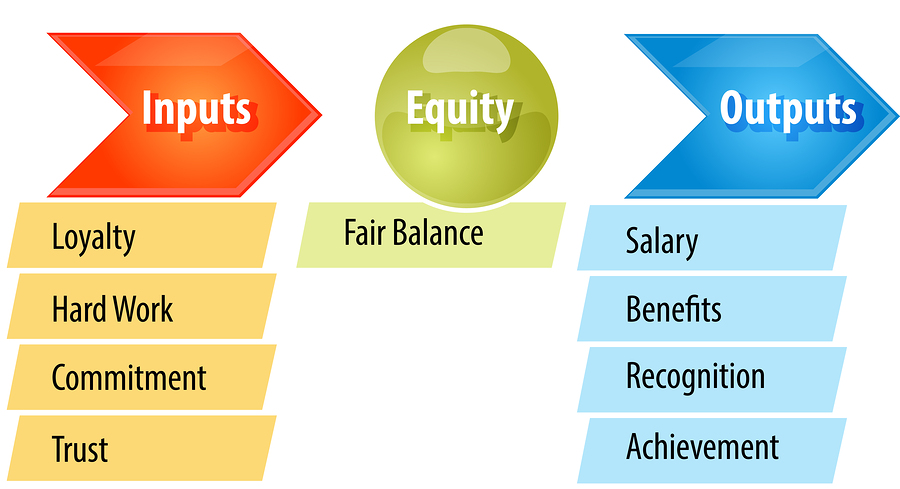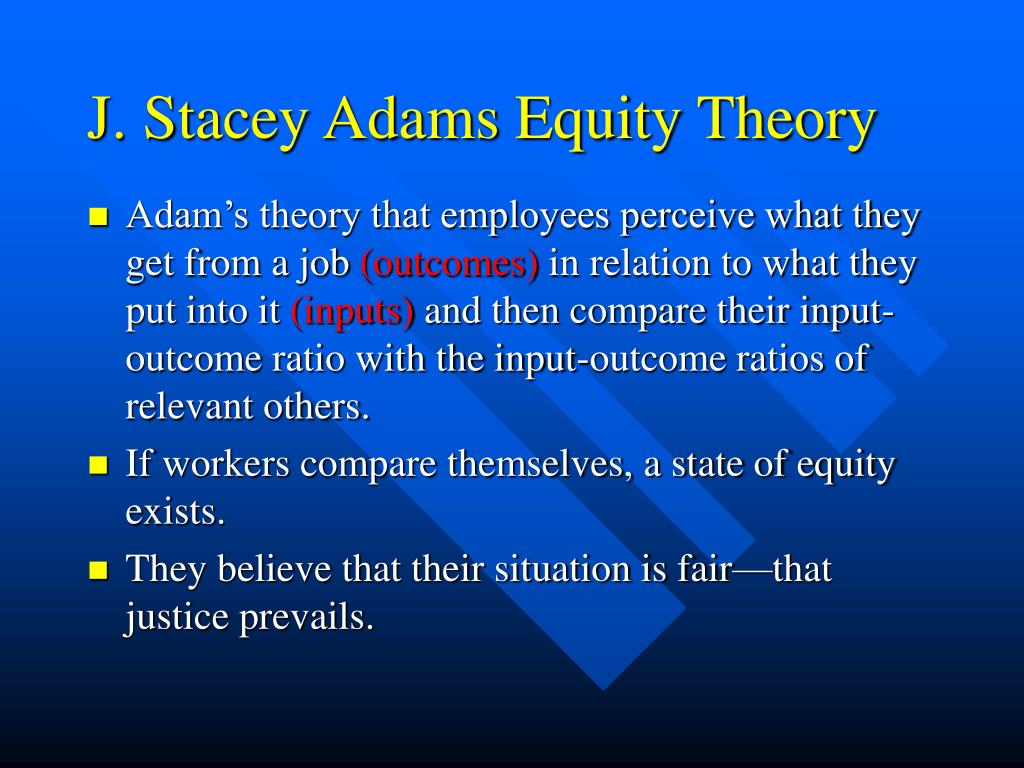

“Cognitive Distortion ”- Employees who perceive themselves as being in an inequitable situation will seek to reduce the inequity either by distorting inputs and/or outcomes in their own minds by directly altering inputs and/or outputs, or by leaving the organization.Ĭriticism of Adam’s Equity theory of motivation “ Social Comparison ”- Employees define what their equitable return should be after comparing their inputs and outcomes with those of their coworkers.ģ. T hree primary assumptions of Adam’s Equity Theory of Motivationġ.“ Equity norm”- Employees anticipate a fair return for what they contribute to their jobs.Ģ. The greater the inequity, the more distress people feel and the more they try to restore equity.The person who gets too little may feel angry or humiliated.Ĥ.Individuals who perceive that they are in an inequitable relationship attempt to eliminate their distress by restoring equity.The person who gets too much may feel guilt or shame.According to equity theory, both the person who gets “too much” and “too little” feel distressed.The more inequitable the relationship, the more distress individuals feel.Thus, groups will generally reward members who treat others equitably and generally punish (increase the cost for) members who treat others inequitably.ģ.When individuals find themselves participating in inequitable relationships, they become distressed.The only way groups can induce members to equitably behave is by making it more profitable to behave equitably than inequitably.Systems of equity will develop within groups, and members will try to induce other members to accept and follow to these systems.Groups can maximize collective rewards by developing accepted systems for equitably apportioning rewards and costs among members. Individuals seek to maximize their outcomes (where, Outcomes = Rewards – Costs)Ģ. Propositions/ Suggestions of Adam’s Equity Theory of Motivationġ. others outside of the individual organization.The individual’s experience with other organizations.The individual’s experience within their current organization.Employees subconsciously list all their outputs & inputs and then compute an input/output ratio by dividing output value by input value.į our referent groups for Adam’s Equity Theory of Motivation.Input/output Ratio of Adam’s Equity Theory of Motivation Outputs / outcomes of Adam’s Equity Theory of Motivation Inputs of Adam’s Equity Theory of Motivation Outputs- Elements that persson receive from the jobs.Inputs- Personal elements that person put into the jobs.Three components are involved in this perception of fairness :.If we believe we are treated unfairly, we attempt to change our beliefs or behaviors until the situation appears to be fair.Our levels of motivation and j ob satisfaction are related to how fairly we believe we are treated in comparison with others.Premise of Adam’s Equity Theory of Motivation –


It explain how workers select behavioural actions to meet their needs and determines their choices.Adam’s Equity Theory of Motivation is Process theories of motivation.The theory developed by John Stacey Adams (1963), a workplace and behavioral psychologist.Introduction of Adam’s Equity Theory of Motivation 8 References for of Adam’s Equity theory of motivation:.7 Applications of Adam’s Equity theory of motivation:.6 Criticism of Adam’s Equity theory of motivation.5 Three primary assumptions of Adam’s Equity Theory of Motivation.4 Propositions/ Suggestions of Adam’s Equity Theory of Motivation.3 Four referent groups for Adam’s Equity Theory of Motivation.2.3 Input/output Ratio of Adam’s Equity Theory of Motivation.2.2 Outputs / outcomes of Adam’s Equity Theory of Motivation.2.1 Inputs of Adam’s Equity Theory of Motivation.2 Premise of Adam’s Equity Theory of Motivation –.1 Introduction of Adam’s Equity Theory of Motivation.


 0 kommentar(er)
0 kommentar(er)
